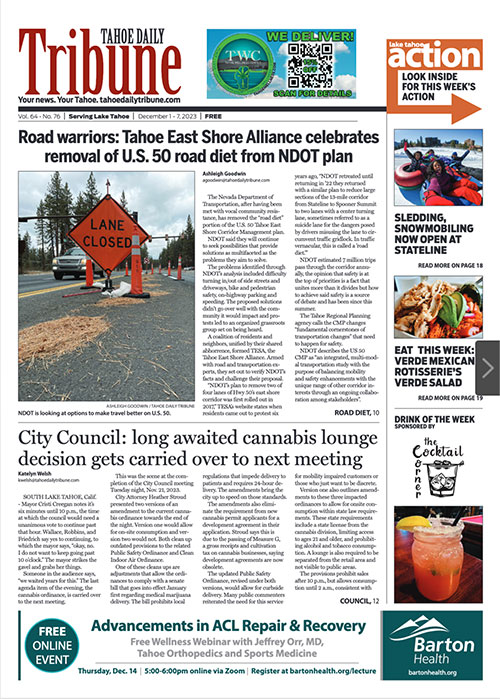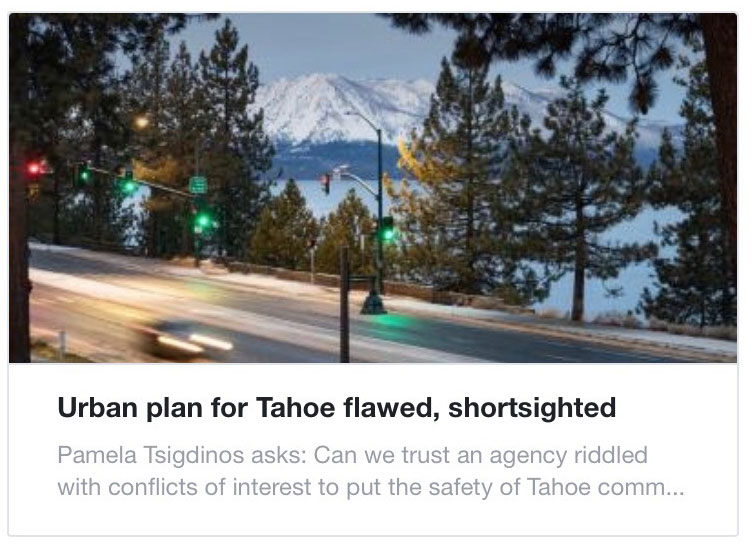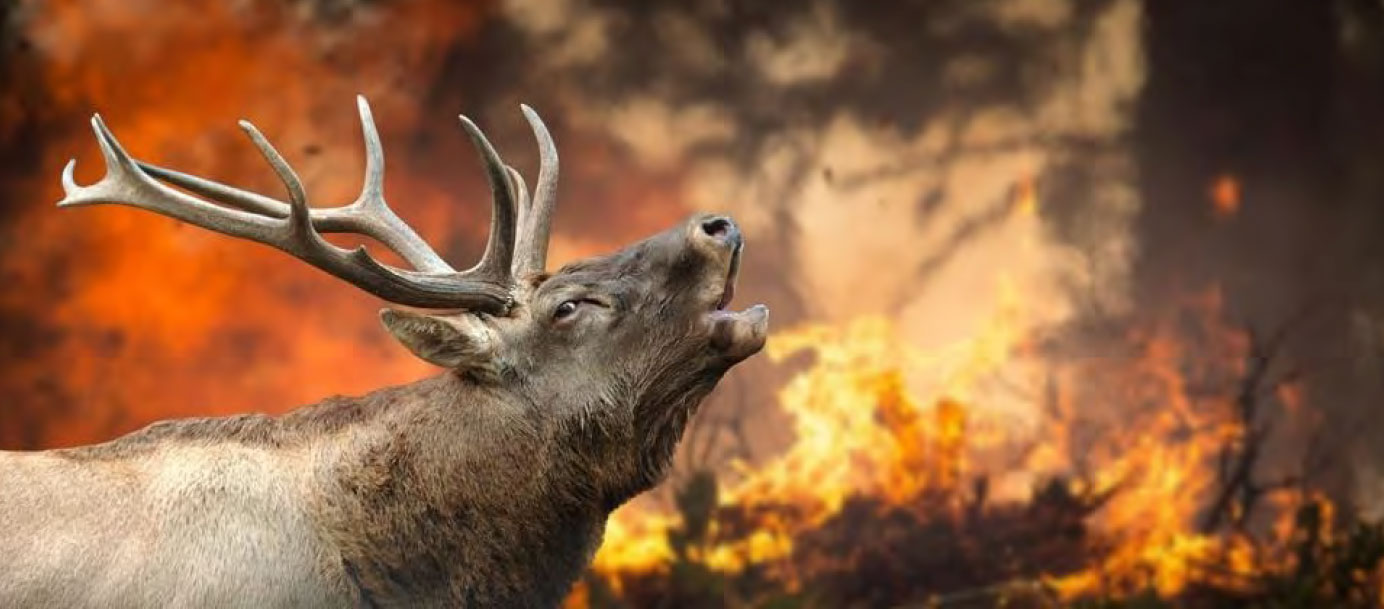News + Media
Keeping it raw, real and local
License To Burn: Wildfire As the Ultimate Private-Public Partnership
Most people think Caldor started in Grizzly Flats on August 14. In fact, it began 365 days earlier in Sacramento with a Memorandum of Understanding (MOU) signed by Gov. Newsom and then USFS Chief Vicki Christiansen that spells out everything that came next. And where did it end? Well, that too is in the blueprint of the MOU. Caldor was not just another wildfire and the true story must be told.
We at Tahoe East Shore Alliance (eastshorealliance.com) are deeply involved in exposing the truth and refuting false narratives that are destroying our communities, our forests and our Lake, right before our eyes.
The federal government owns over 86 percent of land in the Silver State and the consequences of these alliances can be seen in the Tahoe basin.
Dana Tibbitts, April 22, 2024, 11:42 am
This is Part One of a three-part series with links at the bottom of this article.
With increasingly intense wildfires over recent years, we in the West are expected to embrace the new wildfire normal, as if it’s normal to have multiple catastrophic fires in any given fire season. Running for your life from burning houses because of a downed power line is the new normal? The destruction of 222,000 acres of magnificent forest and old-growth trees is to be not only expected, but blamed on the irrefutable and “settled” consequence of climate change.
Former Democratic Governor Steve Sisolak told MSNBC, prior to completion of a Caldor fire investigation, that the devastating and deadly fire was due to climate change.
As the infernos rage and havoc ensues, a sacred alliance is forming in Sacramento to fight fire with even more fire—this fueled by a plethora of shared and shadowy public and private “partnership” memorandums of understanding (MOUs). The alliances extend into Nevada as the federal government owns over 86 percent of land in the Silver State, and the consequences of these alliances can be seen in the Tahoe basin.
This is a story of how public private partnerships, like those that proliferate around Lake Tahoe, are setting the world on fire. Literally.
On August 13, 2020, while the world was in lockdown, Governor Gavin Newsom and then USFS Chief Vicki Christiansen announced an historic Agreement for Shared Stewardship of California’s Forests and Rangelands. This brave new world of Shared Stewardship MOUs targets 1 million acres of California’s forests and rangelands for annual “treatment” by 2025, including vastly expanded use of “prescribed” or “managed” fire. “Coordinated stewardship is critical to success.”
This broad agreement aims to empower partnerships across jurisdictional boundaries and to generate jobs and economic opportunities for “investors” in wood products and forest byproducts. ‘Parties’ to this agreement include the California Natural Resources Agency (CNRA) and the Department of Forestry and Fire Protection (CAL FIRE). But that’s just the tip of the iceberg. The partnerships among consultants, ideologically-aligned nonprofits and “preservation” groups, politicians, and the Tahoe Regional Planning Agency (TRPA), are endless. These vast and shadowy alliances are the “signatories” that drive the decisions and influence the decisions for the ultimate development, safety and environmental health of the basin.
On May 19, 2021, in a sweeping move to rally the troops, Regional Forester Randy Moore—now Chief of USFS—along with a powerful cabal of 36 signatories to the agreement, seek to enlist “as many partners as possible who are interested in increasing the ‘use of wildland fire’ to meet ecological objectives, public health, or community safety objectives.” The Fire Partnership MOU states, “Signatories can be government and non-government organizations or individuals, generally the designated leader of each organization.”
Parties to the agreement include, but are not limited to, The Nature Conservancy, Pacific Fire Trust, California Department of Parks & Recreation, California Forestry Association, Southern California Edison, Bureau of Land Management and the Sierra Club. For the full list see here.
What could go wrong?
Under a related and longstanding MOU between USFS and the bi-state planning agency TRPA, the USFS is exempted from TRPA review and given broad authority to operate on forest service land in the Tahoe Basin as it sees fit. In this scenario, USFS reviews their own projects for conformity with TRPA plans and standards without impediment or intervention from the agency. This arrangement gives USFS carte blanche and TRPA legal cover to not be held responsible for any USFS activity across 80% of the Tahoe Basin.
This network of coordinated stewardship invokes two central policies.
First, “Treat One Million acres of forest service land per year.” That sounds fairly benign until you realize the term “treat” refers to the suppression of wildfire by the “proactive” burning of designated high-risk forest zones through managed burns. In other words, the best way to protect overgrown forests from catastrophic wildfire is to burn it down. Think ‘planned ignition.’ Treatment, of course, is “key to effective stewardship.”
Another core action item specified by the MOU is to “develop innovative markets and investment opportunities for Wood Products and Recycled Forest Byproducts” to be generated by these novel forest management practices. The MOU calls for this plan to be made public so that prospective “investors will know when and where new wood supply will be available,” but also commits to providing investors with “uninterrupted raw material supply” as well as “additional signal tools to guarantee multi-year contracts and incentivize new investments in wood processing facilities.”
After all, sawmills are costly to build and complex to operate.
“There’s a mutually beneficial relationship here,” said USFS Forester Annabelle Monti. “Land management agencies need to treat landscapes and the timber industry needs timber.
However, this matrix of fire policy, plans, and partnerships did not shield Grizzly Flats from the inferno that was about to take them by storm.
On the night of August 14, 2021—exactly 365 days after the announced MOU—a small fire flares up a few miles from Grizzly Flats—a simple brushfire. Residents have no reason to believe the USFS will not easily put it out. But USFS is unresponsive, inexplicably pulling a half dozen Cal Fire engines and crews off the fire in the early hours, ostensibly for fire fighter protection. But two days later, the fire explodes into the mountain town, a monstrous inferno.
Grizzly Flats is leveled in less than 15 minutes.
A 60 Minutes’ investigation cites evidence of mismanagement, outdated tactics, and overgrown forest service land.
Curiously, in a USFS agreement 10 years earlier, the forest service had promised to provide the critical clearance and mitigation measures needed to protect the town from wildfire in a high-risk fire zone. But, they failed to deliver.
After Grizzly Flats, the Caldor fire begins its long trek to Lake Tahoe.
The long trek to Tahoe will be covered in Part Two of this three-part series.
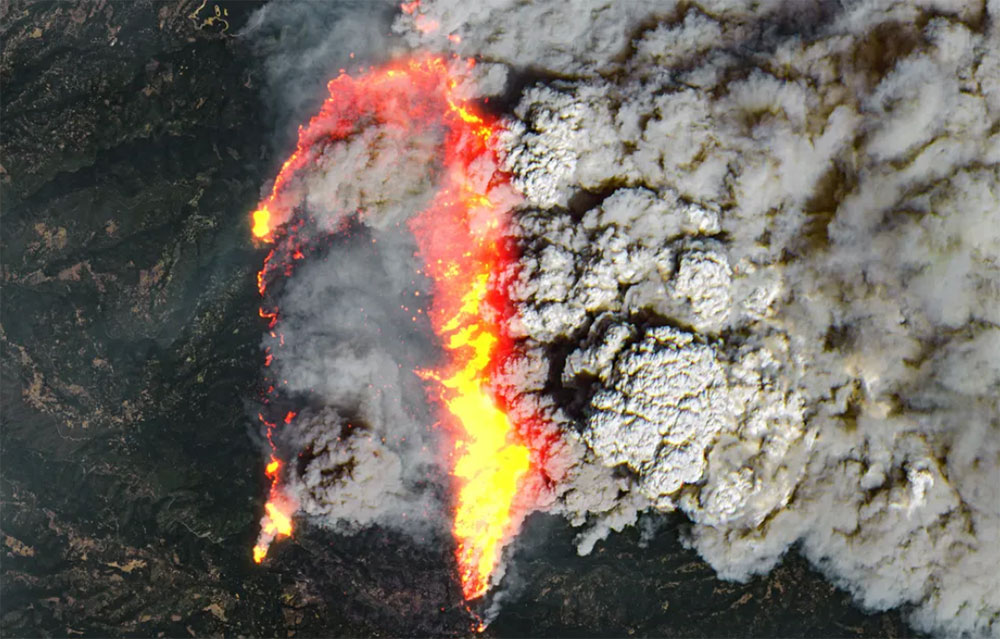
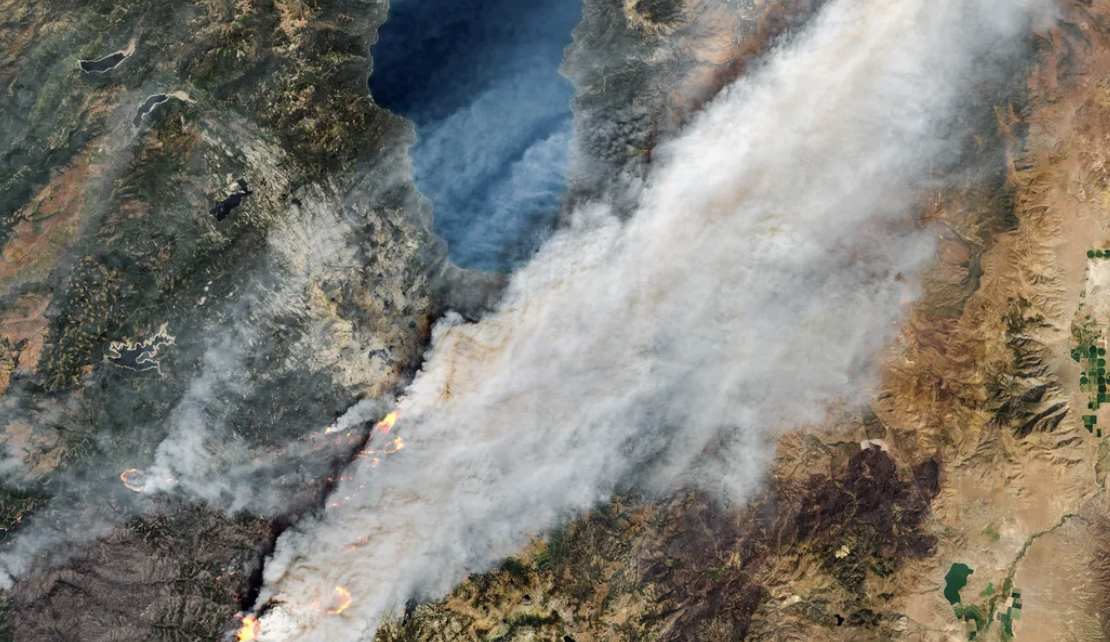
Douglas County Designates Hwy 50 Evacuation Corridor

Let's Discuss WildFire Evacuation in the Tahoe Basin
Let’s discuss the very real problem of evacuation in the Tahoe Basin. TRPA’s refusal to take wildfire evacuation seriously is a growing threat to our lake communities. Their efforts to impose road diet constraints on our primary evacuation route for public safety reasons, completely ignores the real safety threat from wildfire.
Our tech team ran a series of simulations for a 4-lane US 50, assuming a Caldor-like fire scenario starting at Lake Lucille near Meyers. All 4 models show a massive loss of life, with approximately 90% of all vehicles & occupants lost under best-case conditions.
Obviously, a road diet would mean death for thousands more than the tens or thousands of lives lost in this simulation. Let that sink in. This analysis was conducted by Bob Byren, former chief technologist for Raytheon’s Space & Airborne Systems business unit.
Nevertheless, TRPA continues to shortcut or bypasses altogether, comprehensive environmental impact reports and roadway-by-roadway evacuation capacity assessments required for every new project. Instead, they rely on checklist approvals and rubber stamp detours to push through large scale projects that anticipate massive increases in tourism for already overtaxed infrastructure.
This is a travesty of TRPA’s original compact.
As a consequence, we have a profusion of untested, zero vision developments popping up around the lake at an alarming pace, with the flimsiest of environmental analyses and token reviews.
This is unacceptable and should concern all of us very much.
➔ Read ‘How not to be Lahaina’ – I highly recommend you take a close look at this report.
➔ 2News Nevada, Mar 13, 2024 Tahoe Residents Press NDOT to Abandon “Road Diet” Plan for Highway 50

TRPA Oversight Committee Public Comment
Approximately 40 people from north, south, east and west shores of Lake Tahoe attended the January 23, 2024 meeting of the NV Legislature TRPA Oversight Committee to share their concerns about TRPA ethics and operations. Public comment period was cut short but these are the comments provided.
➔ 2News Nevada, Mar 9, 2024 updated Tahoe Regional Planning Agency Holds Legislative Oversight Meeting
➔ 2News Nevada, Feb 9, 2024 updated Grassroots Environmental Organization Sues Tahoe Regional Planning Agency
➔This is the first meeting of the 2023-2024 Interim Jan 23, 2024 LCB State of Nevada
TRPA: stop endangering Tahoe's future
Mt. News, October 2023
This month’s guest column is on behalf of a consortium of Tahoe environmental organization.
Lindgren pulled no punches describing today’s wildfire and evacuation challenges. “Our west shore is very vulnerable. There’s only one way in and out and getting people out to the South and North – depending on the time of year – is challenging,” Deputy Almos said.
NDOT to move forward narrowing 'deadliest stretch,' protests continue
Tahoe Tribune 2023, July 16, 2023
Nevada Department of Transportation heard public comment on Monday, again, regarding the Highway 50 Corridor Management Plan which proposes to reduce a stretch of the thoroughfare from Spooner Summit to Stateline.
According to the NDOT website “U.S. 50 along the east shore of Lake Tahoe is a National Scenic Byway which experiences significant demands from a range of travelers including residents, visitors, recreationalists, commuters and regional traffic that combine for nearly 7 million trips annually.”
Tahoe Prosperity Center’s False Narrative
Local Voices
"Those hundred accidents that they say happen in that area each year, about a third of them are in Zephyr Cove, mostly due to the parking on the highway, people that are under the influence trying to get into their cars and walking down the middle of the highway. Stop the parking on the highway and clean up Zephyr Cove."


Over-development and over-tourism
Tahoe Tribune September 5, 2023, Letter to the Editor
I was struck by the sheer hubris of the TRPA’s Chairwoman Cindy Gustafson and Vice-Chairwoman Hayley Williamson in their recent Opinion piece. They say they are utilizing “science-based policies to manage growth”. All I see is over-development and over-tourism being promoted by their leadership.
The biggest and best thing that has been done to improve the Lake’s health in recent memory is a gift from God and God alone. The amazing snow pack and rain water of the 2022/23 Winter season blessed the Lake with huge volumes of crystal-clear water to materially increase the Lake’s clarity. TRPA did nothing to achieve that.
➔ Read published “Over-development and over-tourism”
You will need to scroll half-way down the page to view this article.
➔ Read “Over-development and over-tourism” screenshot download.
Before a wildfire grew into an out-of-control blaze, the Forest Service decided to let it burn
CNN- Published 10:43 PM EDT, Fri July 23, 2023
The lightning-sparked Tamarack Fire, first discovered on July 4 in the Humboldt-Toiyabe National Forest, was initially confined to a single tree burning on a ridgetop “with sparse fuels and natural barriers to contain it,” according to the Forest Service. Despite the Forest Service’s statement, which assured that the fire “poses no threat to the public, infrastructure or resource values,” the wildfire has since gone on to scorch 58,417 acres and at least 10 structures in California and Nevada.
Tahoe Fund and Tahoe Forest Products
Tahoe Tribune, Oct 6-12, 2023 – page 16.
I was interested in what Amy Berry, CEO of the Tahoe Fund, left out of her September 29, 2023 Opinion piece about forest tree clearing.
➔ Link to full article here.
See page 16.
Why evacuation is priority #1
Evidence shows U.S. Forest Service mismanagement contributed to California wildfire
60 Minutes, Oct 2, 2022
Grizzly Flats, California, was destroyed by fire in less than 15 minutes last year. Most residents there blame the U.S. Forest Service.
➔ Watch episode here.
US Forest Service: Burning the West on Purpose
Killing millions of wildlife and destroying air, water and habitat for future generations.
Caldor Fire: Roads packed after South Lake Tahoe ordered to evacuate; all national forests in California closed due to wildfires
Homes lost, roads packed after South Lake Tahoe ordered to evacuate due to Caldor Fire. Thousands of people rushed to leave after the iconic freshwater lake came under evacuation orders due to the raging Caldor Fire.
State of the lake
‘Super toxic’: What a team found 500 feet below Tahoe's surface
SFGate- Updated
It’s no secret that Lake Tahoe has a trash problem, and local nonprofit Clean Up the Lake has pulled more than 61,000 pounds of debris from the lake since 2018. But as scuba divers are limited to a depth of about 60 feet, that leaves 1,584 feet of depths the organization can’t reach.

